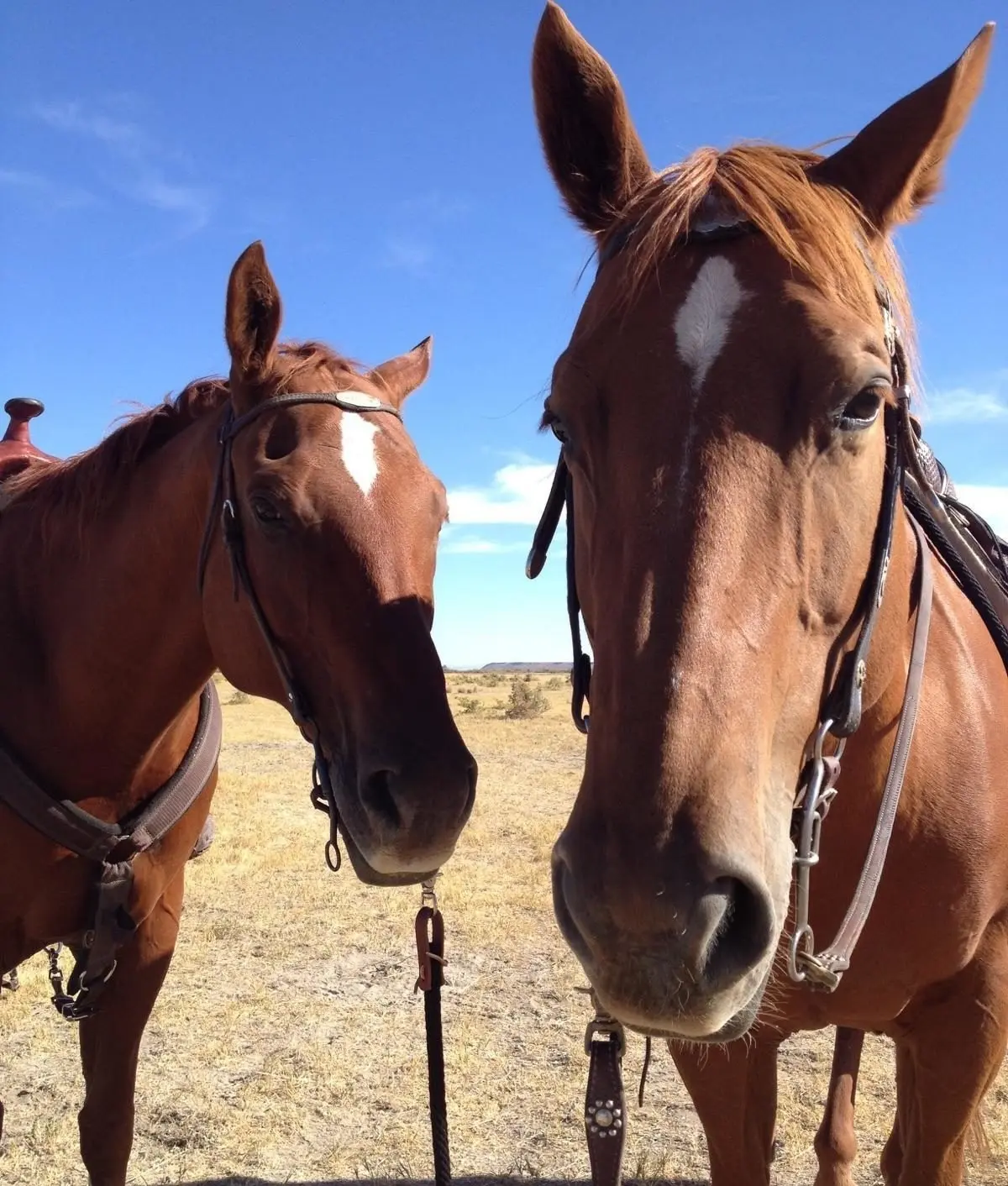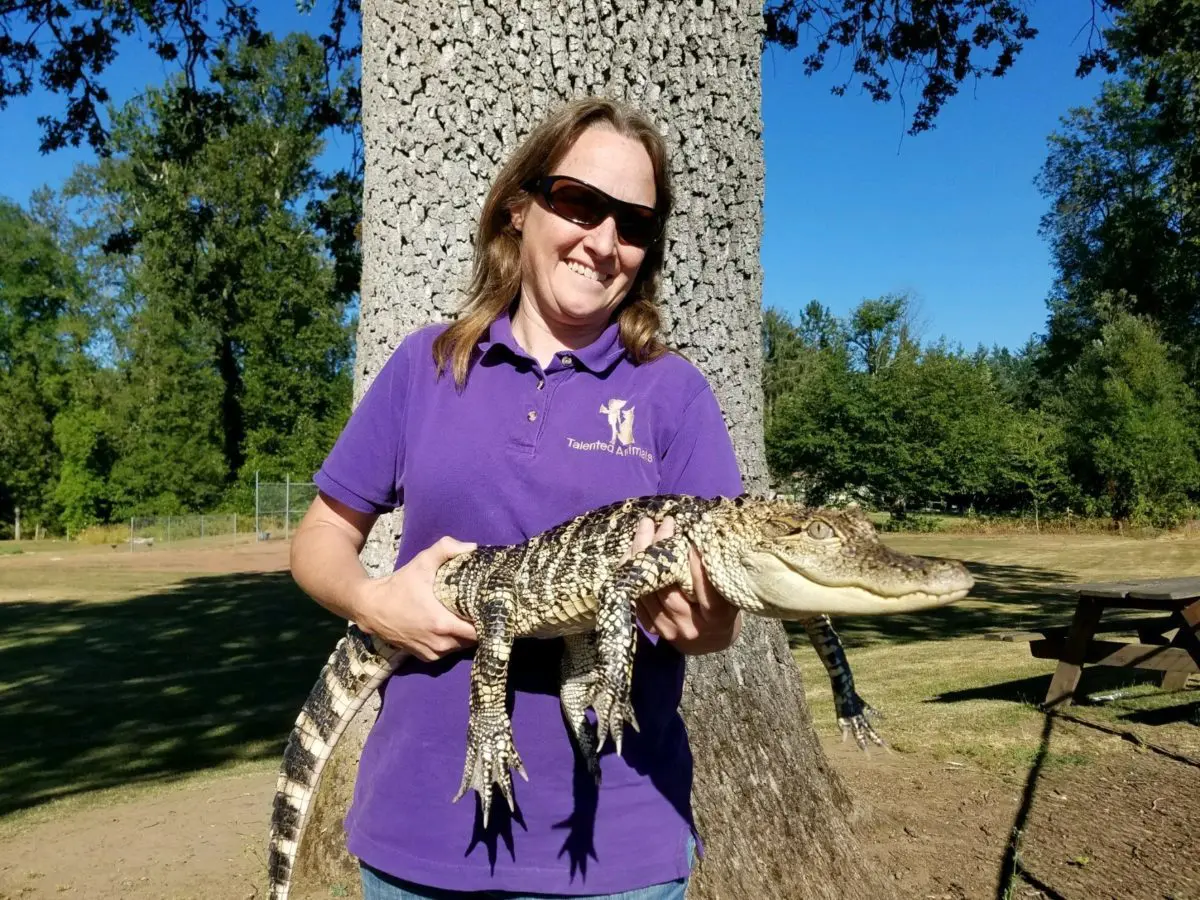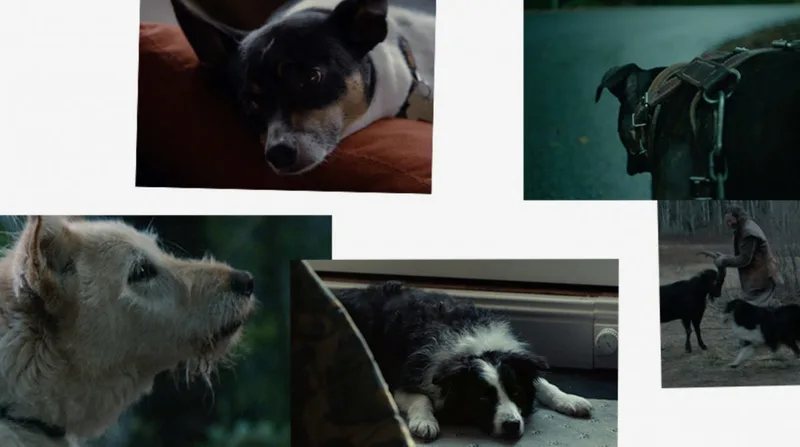At A24, we've pretty much cornered the market on heartbreak.
We’re no strangers to unflinching stories about children in peril or the harsh realities of life on the American fringe. But even still, these Lean on Pete reviews have been next level. The eponymous Pete has—quietly, effortlessly—trampled on the hearts of critics everywhere. Played by Starsky, a registered quarter horse, his long face launched a thousand tragic horse puns across newspaper headlines nationwide.
While some would argue that Starsky's devastatingly soulful eyes are the mark of a natural-born thespian, we’ve been in the industry long enough to know better. Behind every good animal actor, there’s an even better animal trainer. Enter Lauren Henry of Talented Animals. With over 20 years of experience and one of the best websites we’ve ever seen, she’s Hollywood’s premiere animal trainer— the go-to guru whose golden touch turns backroad stray cats into cable rockstars.
Lauren is fascinating to interview and impossible to summarize. Below, our hour-long conversation in full, edited only for clarity.

Tell us about yourself and what led you to become an animal trainer.
It started early. I remember my grandfather told me when I was nine that I was gonna train animals for film because I would always train our house pets to do little shows, then invite all the neighbors over. [I would] do a little circus act with the dog and the cat in the front yard. They’d go and do jumps, and the dog would carry the cat in a basket. [Much later] I started Talented Animals with Roland, my partner, and we have been doing it full-time ever since.
Can you tell us about the horses you worked with for Lean On Pete?
The main horse was played by a horse we have here, named Starsky. He is a registered quarter horse. We had been screening horses for Lean on Pete— Andrew [Haigh] had a particular look in mind. I presented probably 30 horses with different pictures and videos. We had our usuals who we submit, but they weren’t quite what Andrew was looking for.
It came down to nine horses at the end, and Andrew wanted to meet them in person. He came out to the ranch and he said when he drove up and saw Starsky, he knew when he was still in the car that that was the horse to play Pete. And he was all teary-eyed when he got out of the car, like, ‘This is Pete. We don’t have to take a look at the other ones.’
Starsky reminds me of a true actor in the sense that he’s very— he puts himself out there. And it was pretty remarkable on each scene, working with Andrew, that between Charlie and Starsky, they could really pull out the feelings from each scene because they were each so vulnerable. This wasn’t a horse who was just standing there with the same face every day, being perfectly stoic and stone-faced. Starsky was like, ‘Hey, I’m really gonna check in with what Charlie is up to and be there.’ The synergy was really amazing.
How can you tell if a horse will feel comfortable on set?
You can tell immediately when the horse is nervous, and its face is tense, and it can’t handle the introduction, let alone [the idea of] being hauled to someplace new every day with a different group of people, and a camera dolly and a track. You just kind of get a sense for animals after a while.
I have early pictures of Starsky. We’d taken him to a new arena to practice with him, and there was a giant teddy bear sitting on the side and a tarp blowing over the top, and all of the things that would normally be red flags to a horse. And Starsky didn’t even look as he walked by. He’s like, ‘None of those things matter, I’m with you, my person.’
After that, we trained Starsky to learn behaviors, like pawing the ground, so if Starsky was like, ‘Hey, I’d rather do something for cookies than stand here,’ during shooting, I could offer Andrew some behaviors. There are some shots in the movie where he’s pawing the ground and I’m actually off-camera cueing that paw, and he knows he’ll get a cookie. But there are other scenes where he’s completely in the moment and scene, and he’s pawing the ground because it just feels like the right thing to do with that emotional environment, and it worked.

We love the animals on your website. Do you live with all the animals you work with?
Most of the time, yes, we do work with our own animals that are in-house, simply because we know how to prepare them for working on a set. If we don’t have a particular look that a production wants, we have a lot of really good connections. We have the ability to create a rapport with an animal very quickly and find out what they like, what their primary reinforcers are, what gets them excited, what makes them want to be with people and be a certain behavior and be on set. So that kind of expands our pool without actually having to physically have a lot of animals.
Do you see your animals as pets or professionals?
Absolutely as pets first and foremost. In fact, prior to this phone call, I had to take [the dogs] for a really long walk because they’re all sitting right at my feet and I wanted to make sure they’re all happy and content. They’re in the house, they’re sleeping in our bed, they’re part of our lives. The reason that I wanted to continue doing what I do and train animals for film is I wanted to spend every single day with my dogs. [Before starting Talented Animals], their lives were passing by while I was at work. And I didn’t want to miss out on that.
If you’re not on a production, what’s a typical day like?
If we don’t have a show coming right up, our day is getting [the animals] up in the morning, getting everybody out, going for a walk. Everybody has a particular meal, everybody’s diets are unique, so preparing all the diets and feeding them. Usually there’s a little bit of quiet after that, everybody’s kind of sleeping mid-morning. Then afternoons we’ll have a training session with all the animals, with just whatever they need to work on, just to keep their skills up and teach them new things. Usually there’s another big long run or walk because we have horses as well, so we’ll get them out, do a little bit with them in the afternoons. In the evenings sometimes I go to practices for different dog competitions. Or just like everybody else after dinner, we’ll all kind of cuddle on the sofa, watching a movie.

You’ve worked with such a vast array of species. Are any species particularly challenging?
The principles of training and building a relationship are the same for all [species]. Finding the motivation, finding the desires of that particular individual within a species, is probably the most challenging part, but also the most fun. When you get out of your own head and can just be there with them and their needs—amazing things can happen.
So for instance, I’m working with an alpaca and in one of the scenes, the actor is supposed to come up and pet the alpaca. It’s very different for an alpaca than it is, say, for a golden retriever. You don’t need to spend a lot of time with a golden retriever, they’re gonna love being petted by the actor.
With the alpaca, they’re like, ‘I really can’t wait until this person leaves.’ But the alpaca is also like, ‘What I really care about is that bucket of apples that you have.’ So going through all of the questions — do you like to be with other alpaca, yes or no? Do you like apples, yes or no? Do you like this feed? Do you like me standing next to you? And I go through all those checklists in an organic and friendly way, and take my time.
So you build this toolbox of things that work well for this particular alpaca and you are always willing to adjust as they adjust. Now I have three alpacas. I have one that loves to be petted. She didn’t know she loved to be petted when we started, and now she’s like, ‘Oh, you can pet me even without apples, I like to be petted.’
We did a movie called The Witch, and it has a goat that is... very prominent in a lot of scenes. During the press tour, some stories came out about the goat being a bit too aggressive on set. I think he sent the lead actor [Ralph Ineson] to the hospital three times.
Wow, well if I were in that situation, I would have a second goat that liked the actor. And if that other goat had a particular behavior that was needed, I’d use him but isolate it in its own scene. But yeah, some of those stories come up every once in a while. My guess is the goat was having a good time. I don’t know about the actor.
Do you find sometimes there’s an animal that has really good chemistry with an actor? Or really bad chemistry?
Oh yeah, I’ve been on sets where the actor felt upstaged by the animal and was resentful, so on ‘action’ they disconnected. It’s like the animal is trying to have a rapport with this person and receive the information they need in order to do their stuff in the scene, and that person just disconnects.
One of my favorite actors to work with was Morgan Freeman. It was a big, long emotional scene with a dog, where they allowed this kind of improv to happen. Morgan was so able to adjust to what the dog was doing, and envelop her in that scene and just make it about the two of them. He just handled the situation so elegantly and beautifully, and the dog was like, ‘I’m with you, you’re my forever person.’ It was one of those defining moments in my career where I sat back and was like, ‘Wow, I’m in the presence of greatness here.’

Personal question, I have a cat. Can you tell us about what it’s like working with cats?
So I have a Siamese cat team, I guess you would say. And there are three kitties that all look the same. I have one named Mac, which stands for Most Amazing Cat. It used to be Most Annoying Cat. He was a stray I found, and when I got him home, I realized why he became a stray because he doesn’t use a litter box and he scratches drywall and never stops meowing. He’s annoying. But then I started training him and was like, ‘Oh, you are an amazing cat.’
I had a movie coming out with Diane Lane that called for a cat part. I started to train Mac and I was like, 'You're destined for this.' He absolutely loves to learn new behaviors and show off, and be in the middle of whatever scene—indoors, outdoors, traffic, quiet, noisy, fog—doesn’t matter. This kitty loves to be the center of attention. If you put him in a scene, he’s going to interact with whatever. In one episode of Portlandia, Mac was part of a band and played the scratching post, which is this amplifier with scratch post material on it and a cat bell for symbols— he had to play that. I’m actually in the front row as a dancer in the mosh pit, and I have a stick and I’m pointing at the different parts of the scratching post, and he goes and he plays them. There’s literally a band playing next to him with guitar and electric piano. All that noise, and people in the crowd, and there’s my cat on stage, playing the scratcher.
I have another Siamese cat and all he wants to do is nap, so you plop him on a sofa and tell him to stay, he’s like, ‘Gladly,’ so that’s all we reinforce with him is staying in one spot. Then I have a third one who runs A to B to C, he just runs back and forth to a treat and thinks that’s the greatest thing. So the key for us in terms of a cat actor is, if they are happy and comfortable off the property and being out, just don’t try and make them into something they’re not.
Do you think the adage 'you can’t teach an old dog new tricks' is true?
No, and it’s funny, I think about that adage and I’m like, ‘Well then why are my 12, 13 and 14-year-old dogs still getting work?’ They’re still learning new behaviors and are excited about it. Foundation work was important. They developed a love for learning early-on because I demonstrated it to them. I proved to them that it was worth it, it was fun. They fall back on that in their old age. It’s something I think you can always go back and create, even in an animal that doesn’t have it, because animals, just like us, all have a desire to participate in life.

How do you feel when movies would rather use CGI than a live animal?
I love it when we work together with CGI and have both. I think it can be overdone where it’s all CG, and it loses that heart and soul. I don’t really have any interest in those shows. I feel like I’m being cheated out of an experience. But when you meld live action with CG, I think it really does lend itself to having heart, and soul, and empathy. The ability to look into [an animal actor’s] eyes is kind of like reading a really good book—you can fill in everything that you see with your own experience when it’s a live animal, which I just don’t think you can do with a CG animal.
I also think people lose that feeling of connection with real animals and real life when everything is computerized. Seeing a real animal on screen...it really affects your heart and I think you carry that over into the real world. I don’t know that you do that with a computerized character.
We’d be missing out on so many good animal performances, too.
I think going from a philosophical standpoint, everybody assumes that somebody with a really good understanding of computers can get a performance out of a digitized animal. But when when you are watching [a live animal] and you know there’s a connection between that dog and a person off-screen, and they’re creating this image for you, you feel that connection, that dedication and love. I think it comes through on camera. It came through with Starsky. Lean on Pete would have missed out on a lot if that had been a digitized horse.
This interview was edited and condensed for length and clarity.




